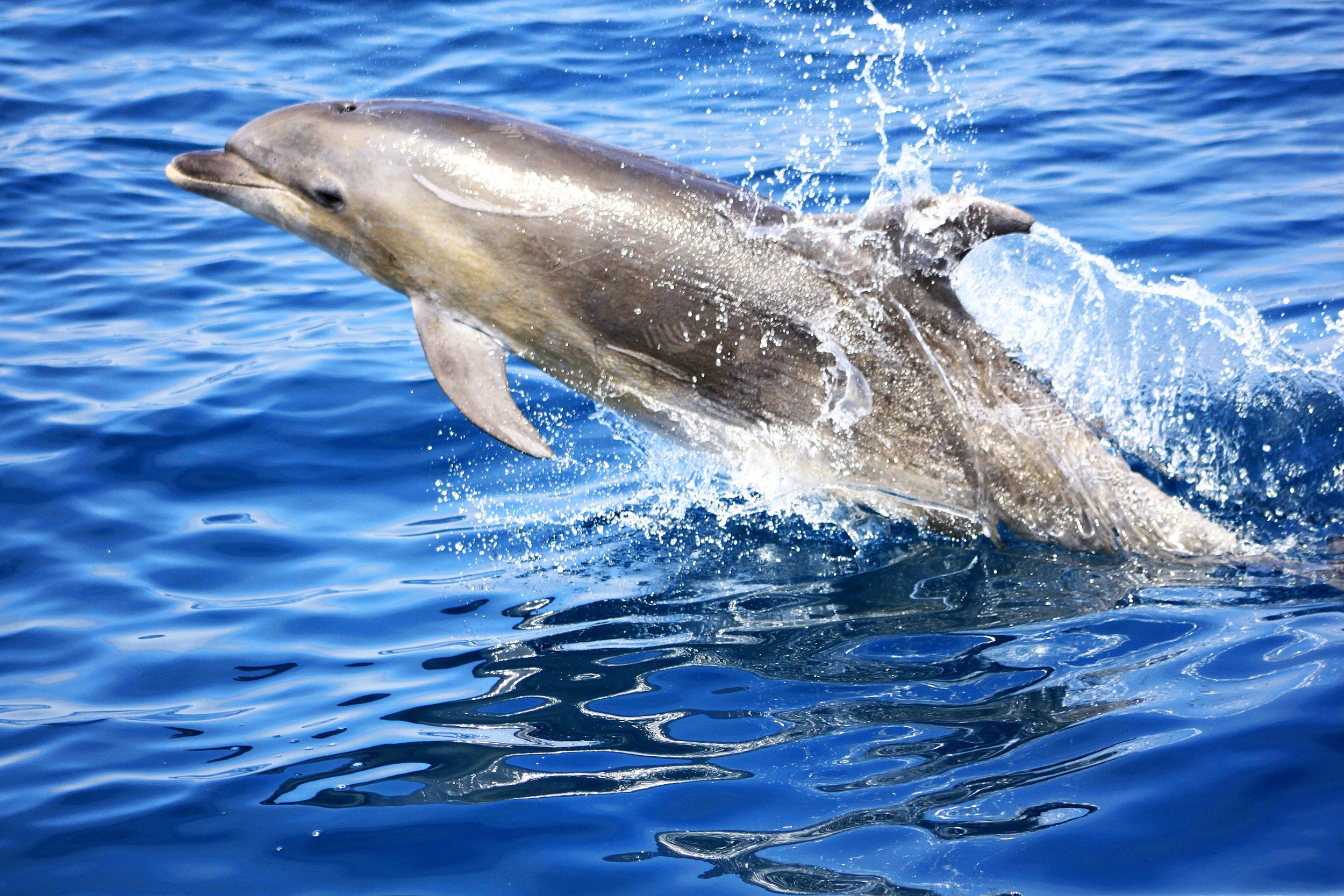Bottlenose Dolphin
Today’s adventure brings us to the deep blue sea. We are going all the way to Shark Bay, off the West coast of Australia. Odds are you’ve already learned a thing or two about these friendly critters! Let’s learn some more about the Bottlenose Dolphin.
Critter At A Glance
What are their Critter Talents? Their bodies are designed to dive deep and move quick. They can swim up to 22 miles per hour. Dolphins speak through clicks, whistles, and squeaks. Sound waves bounce off their heads which help them navigate and possibly stun prey.
How do they raise their young? Baby calves are born in spring and stay with their mothers for 3-6 years. Mothers nurse their babies, which gives them nutrients to grow fast.
What do they need to survive? Dolphins eat fish and squid. Since they don’t have super sharp teeth, they swallow their food whole. Amazingly they can eat 32 lbs of food in 1 day! Although dolphins are top predators themselves, they can sometimes be prey to a large shark or an orca whale.
Let’s hear how Dominic’s adventure takes a tricky turn!
Are you ready for an out of this world fact?
When asleep, a dolphin keeps half of its brain awake in order to keep breathing. They also have 3 TIMES the amount of blood as humans, which help them dive longer without taking breathes. WOW, talk about serious skills for staying safe!
Critter Protectors we need you
to join the CritterQ!
It’s time for a Critter Challenge!
Today’s challenge is to create some comic book dolphin characters.
Print and cut out these dolphins and speech bubbles below.
Write some fun conversations or thoughts on the speech bubble.
Tape them to your dolphins and put on a show!
Share your comics for a chance to be featured in a video! #heymrjim
“All About Bottlenose Dolphins - Birth & Care of Young| SeaWorld Parks & Entertainment.” Animals, Careers, and Educational Programs| SeaWorld Parks & Entertainment, https://seaworld.org/animals/all-about/bottlenose-dolphin/care-of-young/. Accessed 3 May 2022.
Sawal, Ibrahim. “Bottlenose Dolphins May Control Their Heart Rates to Avoid the Bends | New Scientist.” New Scientist, New Scientist, 24 Nov. 2020, https://www.newscientist.com/article/2260624-bottlenose-dolphins-may-control-their-heart-rates-to-avoid-the-bends/.
“Bottlenose Dolphin | National Geographic.” Animals, 26 Mar. 2015, https://www.nationalgeographic.com/animals/mammals/facts/common-bottlenose-dolphin.




